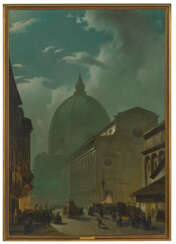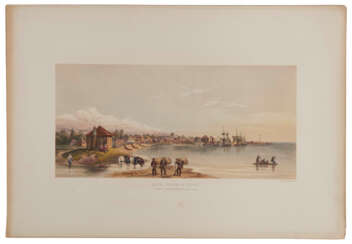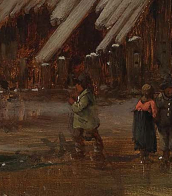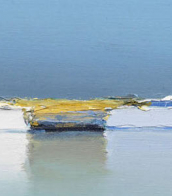1825-55

William-Adolphe Bouguereau was a French academic painter. In his realistic genre paintings, he used mythological themes, making modern interpretations of classical subjects, with an emphasis on the female human body. During his life, he enjoyed significant popularity in France and the United States, was given numerous official honors, and received top prices for his work. As the quintessential salon painter of his generation, he was reviled by the Impressionist avant-garde. By the early twentieth century, Bouguereau and his art fell out of favor with the public, due in part to changing tastes. In the 1980s, a revival of interest in figure painting led to a rediscovery of Bouguereau and his work. He finished 822 known paintings, but the whereabouts of many are still unknown.


Albert Berg was a German landscape painter and museum director.
Berg was educated in diplomacy and law, and also studied painting and painted landscapes. From his travels to Constantinople, New Granada, Rhodes and Asia Minor, Berg brought back many sketches and notes and published them. He was also a member of the Prussian and German Customs Union's diplomatic expedition to Asia and the Pacific in 1859-1862. This resulted in the publication of a pictorial narrative entitled The Prussian Expedition to East Asia: Views of Japan, China and Siam. This historical work reproduces watercolors, oil paintings, and pen and ink drawings, mostly by Albert Berg. The sheets depict views and scenes of Yeddo, Yokahama, Ikegami, Nagasaki, Tientsin, Beijing, Hong Kong, Macau, Ayudhya and Bangkok, with explanations in German, French and English. The crew also included merchants, geographers and botanists, the draughtsman Wilhelm Heine, and the photographers Karl Bismarck and August Sachtler.
In 1880, Albert Berg was appointed the first director of the Silesian Museum of Fine Arts in Breslau and headed it until his death in 1884.


Jacques-Louis David, a preeminent French artist of the Neoclassical movement, made a profound impact on the art world with his compelling history paintings and portraiture. Born in Paris in 1748 into a prosperous family, David's early life was marked by tragedy and ambition. Despite losing his father at a young age and facing opposition from his family, his determination to pursue art led him to become a student of Joseph-Marie Vien and later, a notable figure in the French Academy in Rome. David's artistic journey was characterized by a rigorous classical education, culminating in winning the prestigious Prix de Rome in 1774, which allowed him to study the masterpieces of classical antiquity and the Renaissance in Italy.
David's work is renowned for its classical austerity, a response to the frivolous Rococo style that preceded him. His paintings, such as "The Oath of the Horatii," reflect a blend of classical themes with a modern sense of emotion and drama, resonating with the revolutionary spirit of his times. As the French Revolution unfolded, David aligned himself with its ideals, becoming an active supporter and using his art to serve political purposes. He was closely associated with leaders of the Revolution, including Maximilien Robespierre, and later became the official painter of Napoleon, contributing significantly to the iconography of the era.
Throughout his career, David had a significant influence on French art, not only through his own works but also as a teacher. His studio was a nurturing ground for the next generation of French painters, despite his reputation for being demanding. David's move to Brussels after the fall of Napoleon marked the final phase of his career, where he continued to paint until his death in 1825.
David's legacy extends beyond his contributions to Neoclassical art. He played a crucial role in the development of modern art history, blending classical ideals with contemporary themes, and influencing not only his contemporaries but also future generations of artists. His works, housed in museums around the world, continue to be studied and admired for their technical mastery and emotional depth.
For art collectors and experts, David's oeuvre offers a fascinating insight into a transformative period in art history, where the classical and the contemporary intersected to create a new visual language. His paintings not only depict historical and mythological scenes but also embody the ideals, struggles, and aspirations of his time.
For those interested in exploring the works of Jacques-Louis David and the impact of his art on the Neoclassical movement, updates on new product sales and auction events related to David's work can provide valuable opportunities to engage with his legacy. Signing up for updates ensures access to the latest information and events, offering a deeper understanding of this pivotal artist's contributions to art and culture.


Hélène Bertaux, born Joséphine Charlotte Hélène Pilate, was a French painter and sculptor who achieved equal rights with men.
Hélène Pilate trained as a teenager in the workshop of her stepfather Pierre Hébert, where she modeled designs for watches, then regularly received commissions for small decorative bronze pieces. Aspiring to become a professional sculptor, she completed her studies with Augustin Dumont (1801-1884) in the academic tradition. The support of the imperial couple enabled her to become one of the few women to make a name for herself in the field of monumental sculpture: in 1864 she created the Fontaine Herbet for the Place Longueville in Amiens and during her career she received several prestigious commissions for religious and public buildings.
After achieving success and official recognition, Hélène Bertaux advocated for equality between men and women in the arts. In 1873, Hélène Bertaux opened her first sculpture studio, and in 1879, she opened another one with a sculpture school for women. Her students, including Clémence-Jeanne Eymard de Lanchâtre (1854-1894) and Jenny Weil (1851-1933), later won prizes at the Salon. The creation in 1881 of the Union of Women Painters and Sculptors, of which she was president from 1881 to 1894, marked a new step in her fight for gender equality in academic education. Hélène Bertaux became the first female member of the Salon jury and received a gold medal at the 1889 World's Fair.


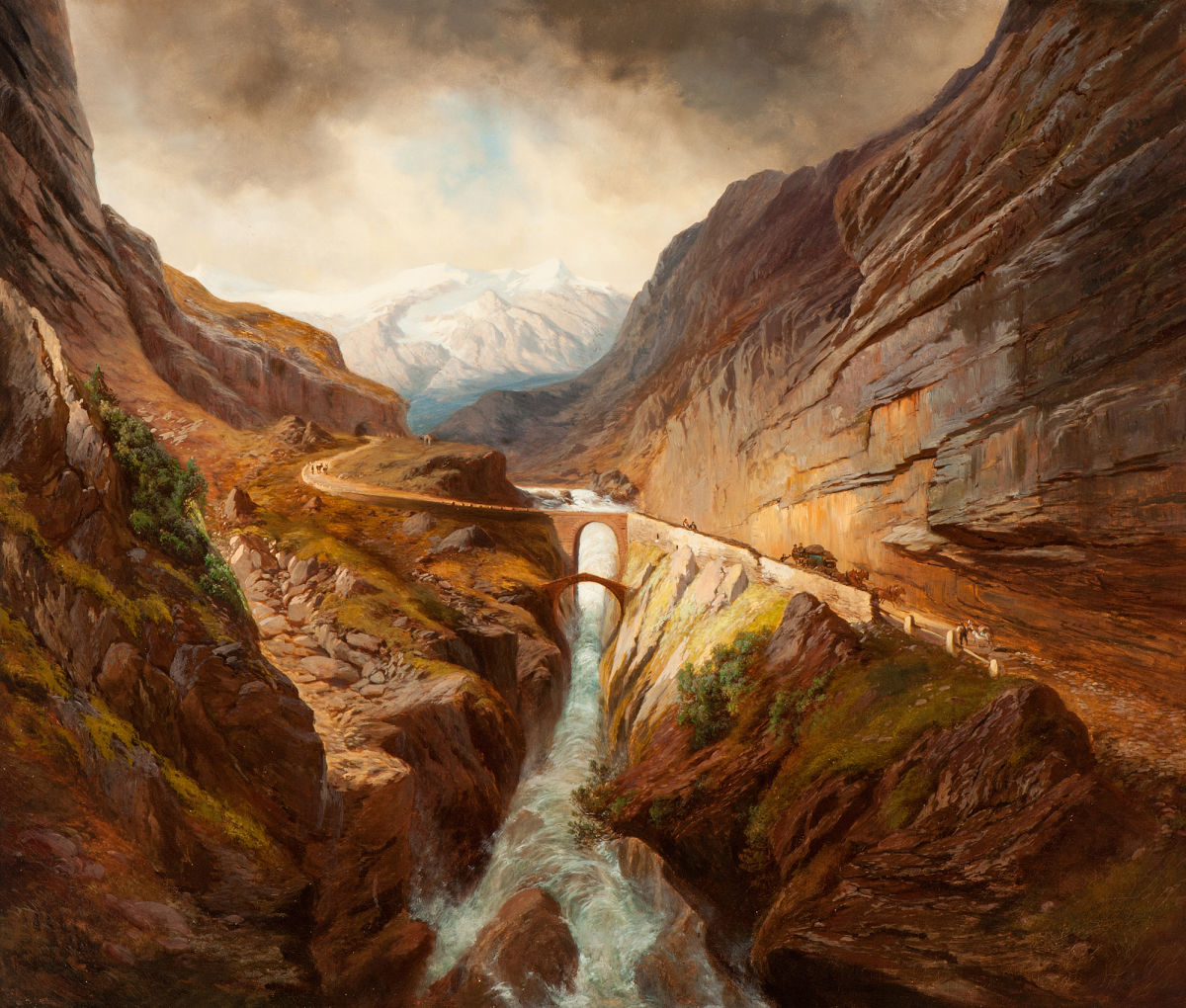
Carl Millner was a German landscape painter.
He quickly established himself as a successful artist and was best known for his popular Alpine landscapes; meticulously rendered with fine details and great attention to light and shadow.



Johann Georg Valentin Ruths was a German painter of the second half of the nineteenth and early twentieth centuries. He is known as a landscape painter.
Ruths painted a variety of natural landscapes, including forests, mountains, plains, desert places and villages. He most often depicted the lower Elbe River, as well as Italian and Swiss vistas. His paintings, imbued with an elegiac mood, are still popular in Germany and are common in galleries and private collections. Some of his famous works are "Evening in the Sabine Mountains", "North German Oak Tree", "The Grave of a Rich Man on the Baltic Coast", "The First Spring Day", "Misty Morning in the Forest" and others.





